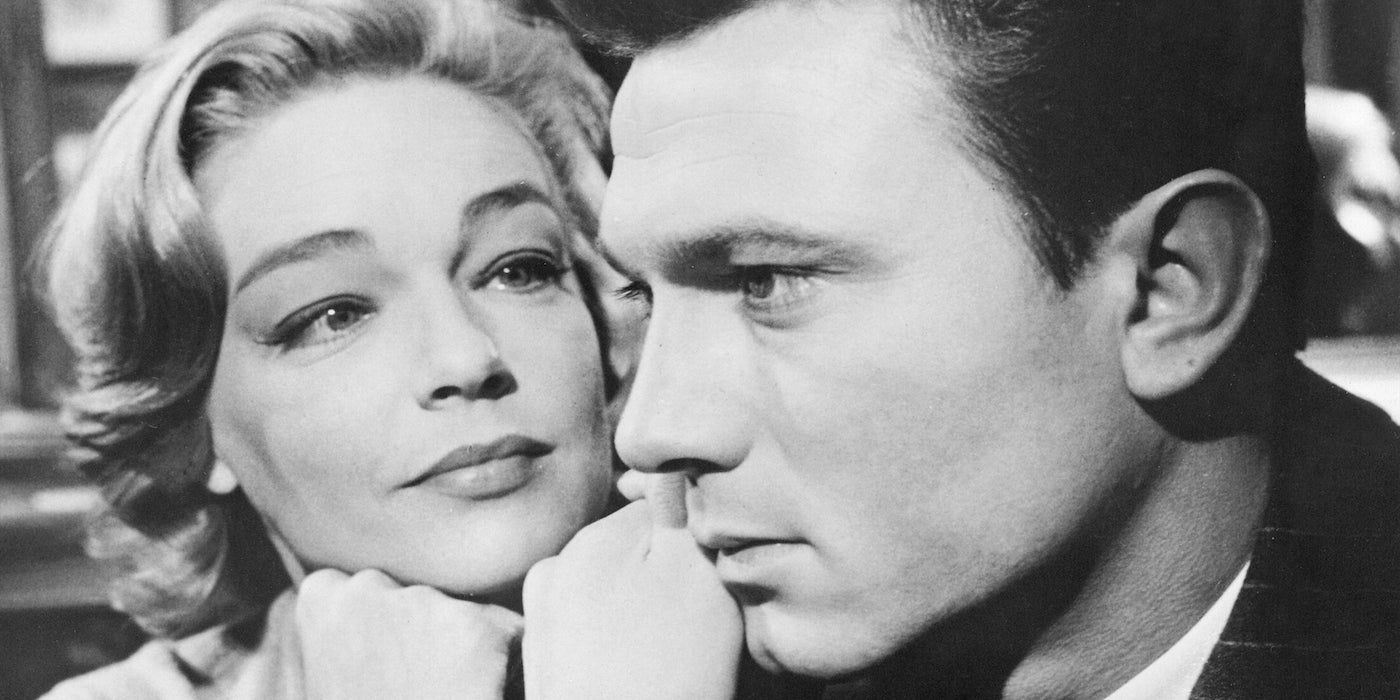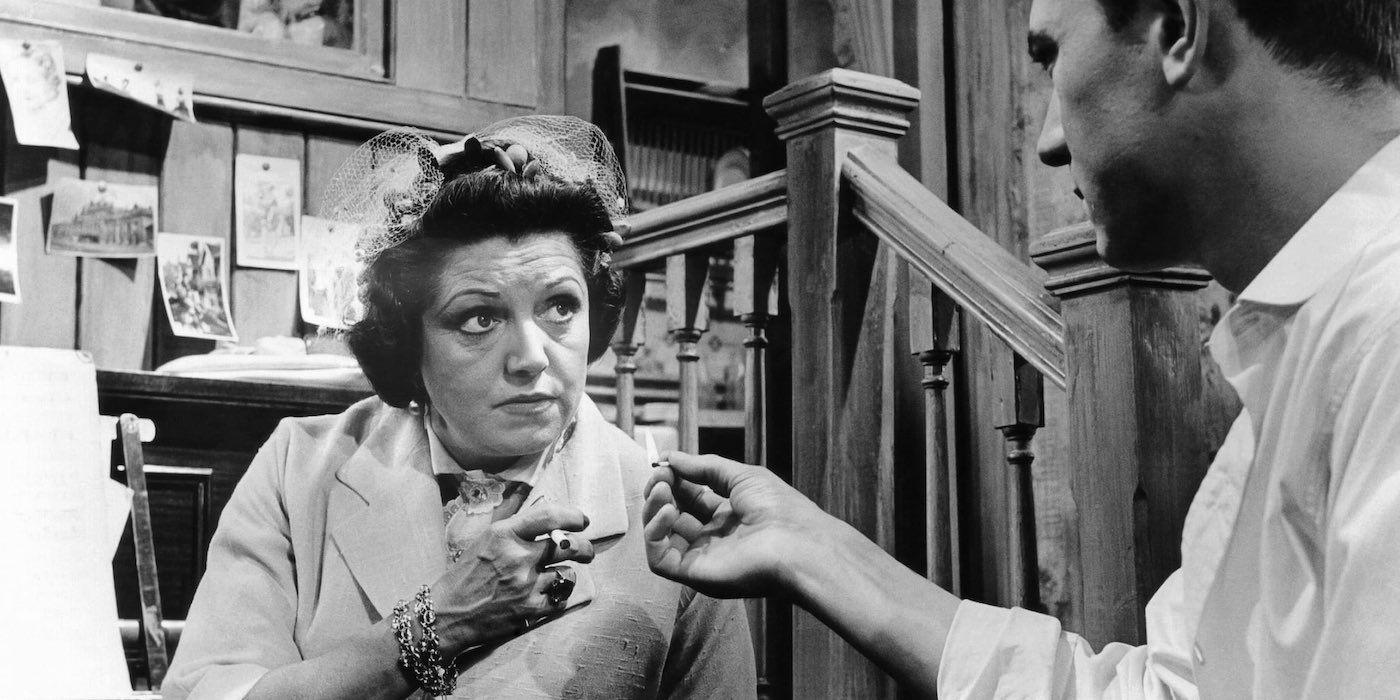The Academy Awards have been around for almost a century, with such a wide variety of performances and performers that have either won or been nominated for these prestigious awards. There’s an ever-growing list of impressive Oscar winners and nominees that are unique among their peers. These include a Best Supporting Actress who was only ten years old, performers that won an Oscar and a Tony for the same role, and even an actor that won two Oscars for one role! However, one thing that these exceptional Academy Award nominees and winners have in common is that they are given ample screen time in order to display their phenomenal acting skills. But does that mean if you’re relegated to a limited role you will never receive the recognition your performance deserves? Well, one memorable Oscar nominee put that idea to rest — Hermione Baddeley.
One of the most notable Oscar nominations occurred at the 32nd Academy Awards in 1960 when Hermione Baddeley received a nomination for Best Supporting Actress for her role in Room at the Top. The film was lauded with positivity, receiving six nominations in total while bringing home two victories. But what made Baddeley’s nomination stand out from the rest was the fact that, despite the film’s nearly two-hour runtime, she was only on-screen for less than two and a half minutes!
What Is ‘Room at the Top’ About?
Room at the Top was a 1959 British drama film that followed Joe Lampton (Laurence Harvey), an ambitious young man who moved from his dreary hometown to a larger city in order to move up in his economic class. While moving forward with his professional ambitions, he begins pursuing Susan Brown (Heather Sears), the daughter of a wealthy industrial magnate in his new city. However, during the ups and downs of that romantic endeavor, Joe also begins a love affair with an older, married teacher: Alice Aisgill, played by Simone Signoret. Drama ensues as Joe is torn between his two love interests while intertwining himself in the complications of marriage, responsibility, and the prospect of financial gain or ruin.
The film was received incredibly positively, receiving nominations for Best Supporting Actress (Baddeley), Best Actor (Harvey), Best Director (Jack Clayton), and Best Picture. In addition to these categories, the film won the Academy Awards for Best Actress (Signoret) and Best Adapted Screenplay. Signoret received praise for her performance as Alice, who was a forlorn older woman that developed a passionate relationship with Joe. However, the trappings of her marriage and Joe’s mistakes and foolhardy aspirations ultimately led to her own unfortunate downfall. Joe’s romantic pursuits were torn between Susan, who represented the upper-class success that brought him to the city in the first place, and Alice, who represented real, passionate love.
Ultimately, Joe chose Alice and a future of authentic love and happiness rather than the wealth and social status offered by Susan. But the image of their joyous future was halted by the trappings of society and past decisions. Alice’s husband refused to sign a divorce and threatened to ruin the lovers if they continued to see each other. To make matters worse, Joe’s previous tryst with Susan got her pregnant, resulting in her father forcing him to marry his daughter, albeit with the promise of the financial security that he had once so earnestly wanted. When Joe tells Alice that he will have to marry Susan, the heartbroken woman morosely drives herself off a cliff and ends her life. Joe is devastated and though the film concludes with him receiving everything he had initially wanted— a wealthy wife and elite social status— he laments the loss of the genuine relationship he once had.
What Makes Hermione Baddeley’s 2-Minute Performance Oscar Nomination-Worthy?
Looking back at that synopsis, it’s notable that Hermione Baddeley’s character did not play a major enough role to be included in the short summary of the film’s plot. Yet she still earned an Oscar nomination because of how impressive her acting was during the sparse moments she got to shine. Baddeley’s performance in this 1959 British drama only affirms the age-old adage: there are no small roles, only small actors. Out of the 115-minute run time of the Room at the Top, Baddeley clocked in a whopping 2 minutes and 19 seconds of actual time spent on screen.
Hermione Baddeley played the role of Elspeth, Alice Aisgill’s best friend, who was only featured in three scenes. Of these three scenes, she only had a speaking role in two of them. Elspeth first appears while Joe and Alice are at the latter’s apartment. She’s portrayed as the cheery but loyal neighbor and close friend of Alice, who actually plays a little tune on the piano before having a heart-to-heart with Joe. She reiterates how lucky Joe is to have Alice and, ever the dutiful friend, she looks him solemnly in the eyes and asks if he loves her. When he responds in affirmation, she gives the haunting warning to him that he shouldn’t hurt Alice, who is more smitten than she even realized.
Elspeth makes her return after Alice’s death, this time a far cry from her more amicable first appearance. When she sees Joe, she is enraged in righteous fury as she shouts insult after insult at the man responsible for her friend’s death. Her rage is palpable as she calls Joe a swine, a bastard, and a filthy little bloodsucker as she all but chases him out of the apartment. Elspeth is last seen witnessing Joe’s wedding to Susan. This time, with no words spoken, Baddeley shows the grief and sadness of a friend with her solemn expression; all the audience needs to understand.
Hermione Baddeley’s ‘Room at the Top’ Performance Showed Range & Emotional Depth
Hermione Baddeley’s Room at the Top performance, no matter how brief, demonstrates her incredible acting ability. She displays a wide range of intense emotions in her few scenes, painting the image of a fully-fleshed-out character in less time than an average commercial break. Baddeley is able to portray a convincing best friend to Alice; she walks into their apartment with the well-walked comfort of someone that has been there more times than she can count. She takes a seat at the piano as if it was reserved for her and when she talks to Joe, you can see her affection for Alice shows through her sincere desire to protect her friend from pain. There is a feeling of natural authenticity in the way that she speaks to Joe, from her friendly small talk to the hushed tones of her deeper queries and warnings.
When Baddeley is next seen, she steals the screen with her portrayal of the ferocious negative emotions that have now overtaken her character. Her anger is palpable as she screams at Joe with relentless rage and, after her warnings before, it feels immeasurably satisfying to see her let completely loose at this man that hurt her friend. Baddeley’s last moments in the film are just a brief silent sadness. As she watches Joe marry another woman, she conveys her mourning with a grief-stricken downward glance and a quivering lip. It’s a moment that was made more impactful because of the lack of dialogue. There’s nothing more she can do or say, but that doesn’t erase the grief she feels.
Two minutes and 19 seconds is no time at all, but when you’re a performer as skilled as Hermione Baddeley, that is more than enough time to give a stellar performance. Her ability to display such differing emotions at their highest intensity without feeling too over the top is exactly why she earned such recognition. From amicable friendliness, unrelenting fury, and exhausted sadness, Baddeley’s performance proved that it’s not just actors in leading roles that get to shine in their performances. Though she didn’t win the award, her nomination was record-breaking and still stands as the shortest screentime of an Oscar nominee.
The Oscars have seen their fair share of memorable moments in the award show’s long history, but Baddeley’s nomination is a great reminder that at its core, the Academy Awards are here to celebrate the achievements and successes of actors and creators of great film experiences.










